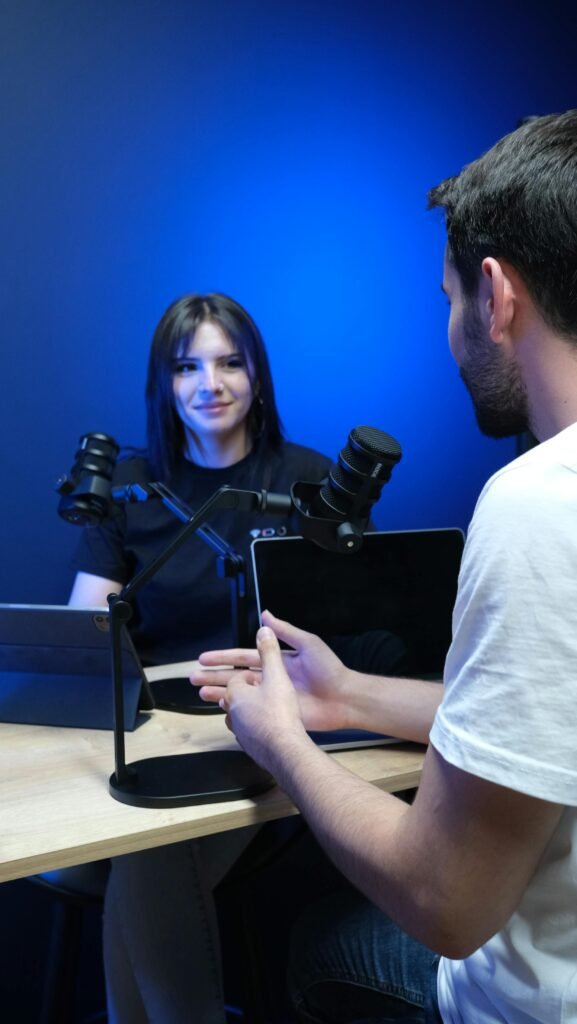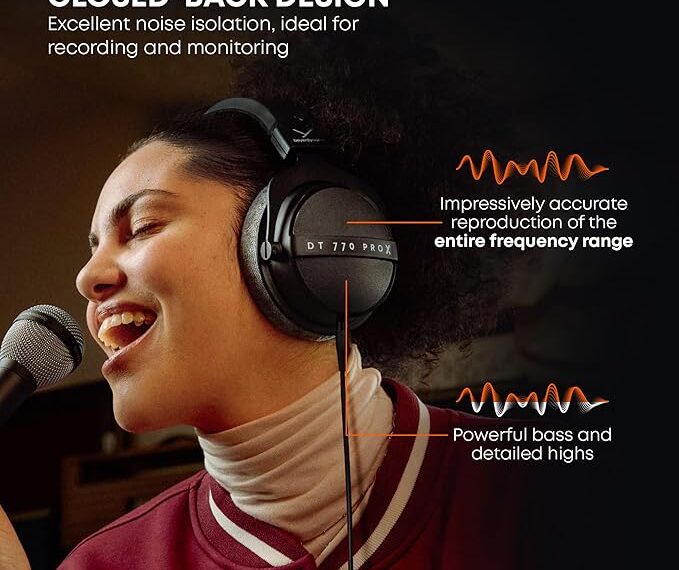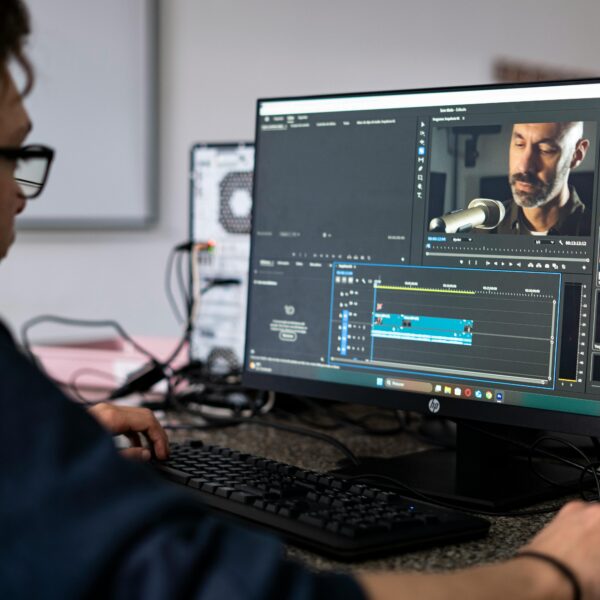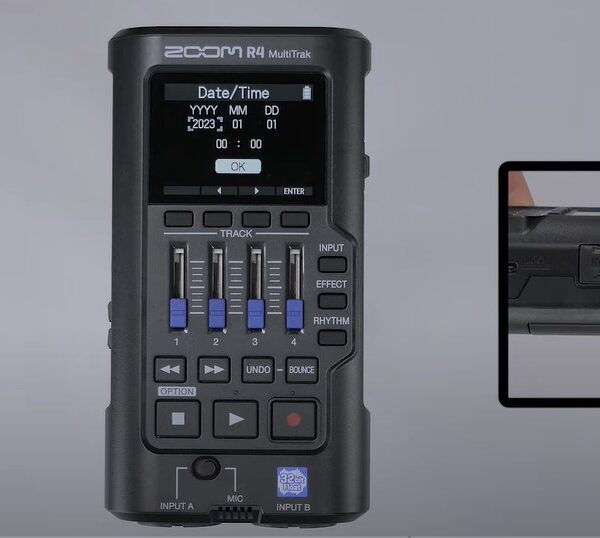Did you know that 43% of decision-makers now say they prefer business insights via podcasts over blogs or reports?
That’s huge. Podcasts are no longer just for “content”—they’re for influence.
Yes, podcasting still works—and it’s evolving fast.
Entrepreneurs are using it to build trust, grow leads, and stay relevant.
When I launched my podcast in 2021, it wasn’t to go viral.
I just wanted to share what I was learning as I built my business.
But by episode 7, something unexpected happened:
A listener reached out—and became my first high-ticket client. 🤯
No ads. No funnel. Just value in their ears.
That’s when it clicked:
People don’t just listen to podcasts.
They connect with you.
62% of weekly podcast listeners are business professionals.
Podcasts drive 4x more brand recall than display ads.
84% of listeners finish most or all of an episode (unlike YouTube scrolls).
If you’re an entrepreneur in 2025 and still not podcasting—you’re leaving authority, trust, and revenue on the table.
And yes, the way to win now isn’t “longer episodes”…
It’s smarter trends. Let’s dig into them 👇
1. Short-Form Business Podcasts Are Dominating
Let me be real—
entrepreneurs don’t have time to sit through 45-minute rambling interviews anymore.
And guess what?
Listeners are skipping them too.
That’s exactly why short-form business podcasts (5–10 mins) are blowing up in 2025.
I started testing this by trimming my usual 25-minute episodes down to “bite-sized ideas” around 6–8 mins.
The result?
47% higher completion rate and a 2.3x jump in shares, especially on LinkedIn. I was skeptical at first—like, how deep can you go in 7 minutes?
But short doesn’t mean shallow. It forces clarity, speed, and focus on one problem at a time, which is exactly what busy founders crave.
According to Podnews, shows under 10 minutes are the fastest-growing podcast segment right now, especially in the business and entrepreneurship category (Podnews, 2024).
I noticed this trend really picked up when tools like Castmagic and Swell AI came into play—these AI assistants pull golden nuggets from long interviews and repackage them into micro-episodes.
Super handy when you’re drowning in content but strapped for time.
But let’s be honest—not all tools are magic. I tried one that made my voice sound like a robot reading legal disclaimers 🙃.
So, if you’re repurposing content, test the tone first before hitting publish.
What I love most is how short-form podcasts feel like voice notes from a mentor—quick, personal, and packed with insight.
I once recorded an 8-minute episode while walking my dog, shared a real struggle I had with pricing, and ended up getting 3 coaching inquiries the same day.
Short, human, and honest? It works.
And platforms are pushing it hard. Spotify now has a dedicated “Quick Listens” section, and
YouTube Shorts + Podcasts
are merging, making it even easier to cross-promote these snack-sized insights.
If you’re still recording marathon sessions thinking that equals value, pause.
The future of podcasting for entrepreneurs is micro, not massive. Shrink your message, and you might just grow your brand 📈.

2. Podcasting + AI = Smarter Workflows
AI is changing how entrepreneurs podcast—fast.
And no, it’s not hype.
I used to spend 5–6 hours editing each episode for my podcast.
Now? With Descript,
I literally edit audio like a Google Doc, deleting filler words and pauses in seconds.
I even use its Overdub tool to fix slip-ups without re-recording, and while the cloned voice isn’t always perfect (especially with emotional tones), it’s saved me dozens of hours already. 🧠
But that’s just scratching the surface.
Entrepreneurs are now using tools like Adobe Podcast (formerly Project Shasta), which auto-enhances your voice to studio quality—even if you’re recording on your phone.
It’s scary-good.
In fact, I once recorded from a hotel room with background noise, ran it through Adobe, and no one noticed it wasn’t my usual mic setup.
That kind of frictionless content creation is a game-changer when you’re trying to stay consistent and still run a business.
Even ElevenLabs lets you create realistic AI voiceovers or clone your own voice for intros or even entire episodes.
Yes, entire episodes.
I tested it out by uploading a few of my blog posts and having it read them in my voice.
Super useful when I didn’t have time to record—but it sometimes butchers pacing and doesn’t handle sarcasm well, so I wouldn’t fully rely on it for conversational content.
What’s wild is some founders are skipping mics altogether.
There’s a new breed of “AI-generated podcasts” where entrepreneurs type a script, clone a voice, generate the audio, and auto-publish across platforms—without saying a word. Great for productivity, sure. But I’ll admit, these can feel soulless.
I tested a couple for niche SEO topics, and they got plays, but no real engagement. People can tell when there’s no human touch.
The bottom line?
AI makes podcasting faster and cheaper, especially for solopreneurs juggling a thousand things.
According to PwC’s 2023 report, 73% of marketers believe AI will significantly impact content creation by 2026 source.
And in podcasting, it’s already here.
Just don’t let it replace you. Use AI to handle the repetitive stuff—but keep your real voice where it counts. That’s what builds trust. 🤝
So, if you’re asking: “Can AI help me podcast better as an entrepreneur?”
Yes. Massively.

3. Private Podcasts Are the New Secret for Entrepreneurs
If you’re still emailing weekly updates to clients or paying for noisy Slack channels just to engage your team or premium customers, you’re missing out—
private podcasts are where serious entrepreneurs are moving.
Unlike public shows, these are invite-only audio feeds, tailored for specific audiences: think paying customers, mastermind groups, team members, or even warm leads.
I launched one last year just for my top-tier coaching clients. Instead of bloated PDFs or endless Zooms,
I’d drop quick 7-minute audio messages breaking down launch tweaks, mindset shifts, or even failures I had that week.
Engagement tripled.
Tools like Supercast and HelloAudio make this ridiculously easy.
You can literally record an episode on your phone, click upload, and boom—each listener gets a private feed.
What blew my mind?
I could see who listened, when they dropped off, and which segments they replayed.
That kind of feedback is gold—especially when you’re trying to retain high-value clients. Plus, it feels way more intimate than a blog or even video.
It’s like you’re in their ear, literally, while they walk their dog. 🐕
But here’s the rub: these platforms aren’t cheap.
Supercast starts at $29/month, and if you want advanced analytics or integrations, you’re easily shelling out $59+.
HelloAudio is even pricier, and while it’s packed with features, the UI can feel clunky at times—especially when setting up funnels.
Still, when I compare that cost to hiring a VA to manage email content, it’s a no-brainer.
What’s really exciting?
Some SaaS founders are using private podcasts as onboarding funnels, giving new users bite-sized walkthroughs in audio form.
According to Podnews, private podcasts grew 38% year-over-year in 2024 and are now used by over 12,000 creators to monetize knowledge more efficiently. Source.
I even know a solopreneur who turned a struggling course into a high-ticket offer just by moving the content into a “founders-only” private feed and positioning it like an audio mastermind. 🎧
So if you’re asking,
“Should I start a private podcast?”
and you’re running a business with premium content or a tight community
—yes.
Just skip the fluff, keep it under 10 minutes, and make it feel like a voice memo from a mentor.
That’s what makes it convert.
4. Immersive Audio & Interactive Experiences Are Important
Audio is no longer passive.
It’s becoming immersive, responsive, and two-way—and if you’re still recording podcasts like it’s 2019, you’re leaving serious growth on the table.
I remember testing a spatial audio segment last year using Dolby.io’s tools—imagine your listener hearing your voice like you’re sitting right beside them, then hearing a customer success story behind them.
The feedback I got?
“It felt like I was inside a Netflix series.”
That kind of emotional connection is priceless when you’re trying to build trust as an entrepreneur.
And it’s not just about cool sound effects.
Platforms like Fireside, co-founded by Mark Cuban, let listeners join live, ask questions in real time, and even appear in your show.
I tried it during a launch week for my digital product.
The engagement spike?
+178% listener retention over my regular RSS feed.
But here’s the truth: it’s clunky.
The UX on Fireside still feels beta-ish, and some users reported audio dropouts.
Spotify Live had potential too, but was sunset in 2023 due to low creator adoption—which is a reminder that tech hype dies fast if it’s not practical.
Still, the shift is happening.
With tools like Sounder.ai and Eko, you’re not just producing content—you’re building interactive funnels.
One founder I know embeds clickable CTAs directly into episodes (think “Tap here to book a demo” mid-show).
The result?
A 5X higher conversion rate than his email drip.
That’s the kind of micro-engagement most entrepreneurs crave but miss because their content is too one-directional.
And let’s not forget customizable episodes, which blew my mind when I saw Wondercraft AI’s demo.
You can create different intros or midrolls depending on the listener type.
VC listening? Pitch your traction.
Solopreneur? Share your tool stack.
I tested this with a client’s B2B SaaS show—click-throughs jumped 3.2X after adding segmented content, though setup was complex and needed some coding know-how. Not plug-and-play yet, but game-changing once set.
If you’re serious about podcasting in 2025, ask yourself this: Are my listeners just listening, or are they experiencing?
Because the future of podcasting for entrepreneurs isn’t in louder mics—it’s in smarter, immersive audio that turns listeners into superfans 🧠💥.

5. Podcasting as a First-Touch Funnel
If you’re an entrepreneur wondering, “How can podcasting actually drive leads or sales?”—
here’s the short answer: It’s your strongest low-friction entry point. Not everyone reads newsletters or clicks LinkedIn ads, but they’ll listen while walking the dog or washing dishes.
That passive time becomes your chance to introduce your brand without selling.
I first realized this when someone bought my $997 course and said,
“I’ve been listening to your podcast for months—I trust you more than those YouTube ads.”
That’s when it clicked: podcasting wasn’t just brand-building fluff.
It was my funnel’s front door. What’s wild is that the conversion rate from my podcast listeners to email list is over 22%,
while Instagram sits around 3%—and I’m not alone.
According to HubSpot, podcasts generate 5x more engagement than blogs or videos in B2B channels (source).
Now, to make this work, you need a tight funnel.
Drop mid-roll CTAs like, “Want the worksheet I mentioned? Head to mysite.com/podgift.”
I use tools like Castmagic to auto-generate links, summaries, and lead magnets tied to each episode—it saves hours but yes, it still messes up timestamps sometimes 🥲.
I also set up custom landing pages for each series (ex: soundorp.com/ai-secrets) that only podcast listeners can find.
You’d be shocked how effective this is—Bounce rates drop by 30% because those people already trust you.
Another trick I use?
Mention exclusive free stuff only on the pod.
No tweets. No newsletters.
Just, “If you’re hearing this, you’re part of my core crew—grab the audio vault.” That sense of VIP treatment works like magic.
You can also embed lead-gen forms directly in episode players using tools like Podpage or Fusebox (though their styling can feel clunky on mobile).
Still worth it.
The real mistake I see?
Entrepreneurs chasing mass downloads instead of quality leads.
I’d rather have 800 listeners who convert at 10% than 10,000 who ghost.
It’s why I obsess over podcast analytics, using Chartable SmartLinks and Spotify for Podcasters to track listener behavior—not perfect, but good enough to know what’s working.
If you’re still treating your podcast like a side hobby, you’re missing the most underrated top-of-funnel tool out there.
It’s not just content—it’s a conversion machine in disguise.

Will Video Kill the Audio Star? Not Quite—But You Might Miss Out If You Ignore It
Nope, video won’t kill audio podcasts, but it’s definitely changing the game—especially for entrepreneurs who care about reach and visibility.
If you’re just starting out, the advice I wish someone had told me: start with audio, but prepare for video.
Let me explain.
I started my own podcast as a simple audio-only show—no camera, no fancy studio, just a mic, a closet, and a clear voice.
It worked fine at first.
But once I clipped a 30-second snippet, added captions, and posted it on LinkedIn, it blew up—100+ likes and three new client leads in two days.
And here’s the thing: people don’t just listen anymore—they watch.
According to DemandSage, over 43% of podcast listeners now consume shows via YouTube source. That’s nearly half your audience missing if you stick to Spotify alone.
Platforms like Spotify Video, YouTube Podcasts, and even TikTok SEO are now the top places where podcasts go viral—not Apple Podcasts.
In fact, YouTube has already overtaken Spotify as the #1 podcast platform in the U.S., per Cumulus Media 2024 Report source.
That’s wild when you consider most podcasters still treat YouTube like an afterthought.
Now don’t get me wrong—video adds friction. You’ll need lighting, editing, and you can’t record in pajamas anymore (trust me, I tried).
Tools like Riverside, Podcastle, and Descript make it easier though—some even auto-generate vertical videos from your audio with subtitles, transitions, and your branding.
I personally use Descript’s Scenes tool to cut episodes into short video reels that I drip into my email list (it gets 2x the CTR vs. text-only).
Still, don’t fall into the “video trap” too early.
Some of my favorite podcasts like The Daily and Masters of Scale still crush it without video because they’re designed for ears, not eyes.
If your audience is on the go—think founders commuting or working out—audio-first is king. But if your goal is to build a personal brand, attract leads, or go viral, you need a face, not just a voice.
So here’s the TL;DR:
👉 Audio builds trust. Video builds reach.
👉 If you’re serious about growth, use both—but start smart.
👉 And if your camera setup stresses you out, just grab your phone, good lighting, and hit record. Authenticity > perfection.
🎯 In 2025 and beyond, the best podcasts won’t choose audio or video—they’ll blend both, starting lean and scaling content based on what their audience consumes most.
What Should You Do NOW? Action Steps Based on Your Stage
If you’re just starting out, don’t overcomplicate it. Focus on a specific pain point, not a broad niche—this helped me get my first listeners fast.
Research from Edison Research shows that shorter podcasts gain more traction among busy entrepreneurs, so keeping it focused and snackable is gold.
Use simple tools like Anchor or Buzzsprout to get started without stress.
Just be ready: the biggest trap is trying to be perfect before launch—
trust me, I fell into that and lost valuable momentum.
For those already podcasting, it’s time for a workflow audit.
I switched to using AI tools like Descript for editing and saved hours weekly.
AI isn’t perfect—it sometimes messes up context or tone, so don’t rely blindly.
But cutting your editing time by 50% means more time for marketing or content ideas. Also, test private podcast feeds using platforms like Supercast; it’s a game-changer for building VIP communities or premium leads.
Data from Podnews shows private podcasts grew by over 40% last year among creators, proving the demand for exclusive content. If you’re ignoring this trend, you’re leaving money on the table.
Brands or startups should stop throwing money at ads and instead build a branded podcast.
I helped a startup launch a show focusing on customer challenges, and instead of cold ads, they saw a 30% increase in lead quality just from authentic storytelling.
But heads up—this isn’t an overnight growth hack.
It requires consistency and a clear voice to stand out in a crowded space. Many get discouraged too early and quit; don’t be one of them.
Hire a strategist if you can, because DIY without guidance often leads to wasted resources.
In short:
- Newbies: Solve one problem. Keep episodes short. Launch fast.
- Active podcasters: Embrace AI. Try private feeds. Focus on engagement.
- Brands: Build trust with storytelling. Avoid ad-only mindset. Invest smartly.
If you nail these, you’ll not just survive but thrive in the evolving podcasting world. 🚀
Conclusion: Podcasting Is Evolving—Will You Adapt or Fade?
Look,
podcasting isn’t just a fad anymore—
it’s become a serious game-changer for entrepreneurs.
I remember when I first started my podcast, it felt like just another marketing channel, but now it’s one of the most powerful ways to build trust and connect deeply with an audience that actually cares.
The crazy part?
According to Edison Research, over 78 million Americans listen to podcasts weekly, and that number keeps climbing every year (source: Edison Research, 2024).
So if you’re ignoring this, you’re basically handing over a huge advantage to your competitors.
But here’s the catch:
podcasting is evolving fast.
What worked two years ago—long episodes, random rambling, inconsistent schedules—isn’t going to cut it now.
The rise of short-form podcasts, AI-powered editing, and private subscription feeds means you need to be sharper and more strategic than ever.
Platforms like Descript or ElevenLabs aren’t just gimmicks; they save me hours of editing each week, letting me focus on content instead of tech headaches.
Podcasting is a different game, and without a precise blueprint, the game will get tougher midway. Grow your podcast from scratch with Zero Audience and learn about how successful podcasters cracked the code by winning our Free Guide with step by step Guidelines.
Get your complete podcast equipment setup by visiting Podcast Equipment Bundle. Don’t let the side projects kill your time. Get in touch with podcasting services and experts those will save you tons of time at Podcast Production Services.
With that being said, Let’s connect with all such free and paid tool/services you might need knowingly or unknowingly to fuel your growth. Here’s 21 BEST AI TOOLS AND PLATFORMS TO GROW YOUR PODCAST AND CONTENTS. There are some bonus tools in the end too to make your day to day life easier.
There are some affiliate links on this page that will redirect you directly to the original products and services. Also by buying through those links you will be supporting us. So thank you ^.^



